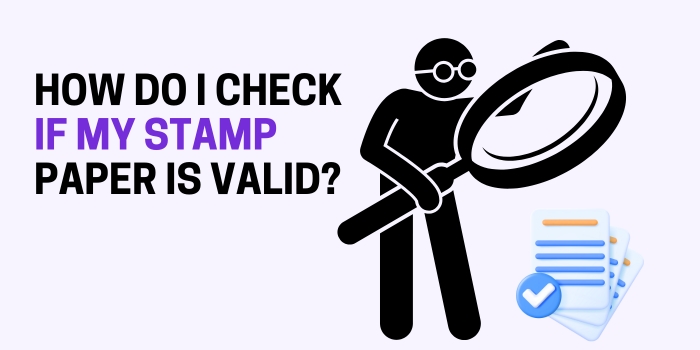
Table Of Contents
- Understanding Stamp Papers:
- Types of Stamp Papers:
- Checking the Validity:
- Consequences of Invalid Stamp Papers:
- Conclusion:
In the realm of legal documentation and agreements, stamp papers play a crucial role in validating the authenticity and legality of various transactions. Whether you’re drafting a rental agreement, sale deed, or any other legal document, ensuring the validity of the stamp paper is paramount. But how exactly can you verify if the stamp paper you possess is valid? Let’s delve into the details.
Understanding Stamp Papers:
Before diving into the validation process, let’s grasp the essence of stamp papers. A stamp paper is a legal document purchased for a nominal fee from government-approved vendors. It serves as evidence of a transaction or agreement and typically includes details such as the parties involved, the purpose of the agreement, and the value of the transaction.
Types of Stamp Papers:
Stamp papers come in various types and are categorized based on their value. In India, for example, stamp papers are classified into non-judicial stamp papers, used for non-legal transactions, and judicial stamp papers, required for legal agreements and transactions involving courts.
Checking the Validity:
Now, let’s explore the steps to ensure the validity of your stamp paper:
- Verify the Details: Begin by carefully examining the details printed on the stamp paper. Ensure that all information, including the value of the stamp paper, date of issue, and vendor details, is clearly visible and accurate.
- Watermark and Security Features: Most authentic stamp papers come with security features such as watermarks, security threads, and holograms. Hold the stamp paper up to the light to check for these features. A genuine stamp paper will display these elements, indicating its authenticity.
- Vendor Authentication: Stamp papers are typically purchased from authorized vendors appointed by the government. Make sure that the vendor’s details, including their seal or stamp, are present on the document. Cross-check the vendor’s information with the list of authorized vendors provided by the government.
- Physical Examination: Inspect the physical attributes of the stamp paper. Genuine stamp papers are usually of high quality, with clear printing and no signs of tampering or alteration. Any irregularities in the paper texture or printing quality could indicate potential fraud.
- Legal Requirements: Depending on your jurisdiction, there may be specific legal requirements for stamp papers, such as the denomination required for certain transactions or the type of stamp paper needed for particular agreements. Familiarize yourself with these regulations to ensure compliance.
- Consultation with Legal Experts: When in doubt about the validity of a stamp paper, seek guidance from legal experts or professionals familiar with the legal procedures in your region. They can provide valuable insights and assist you in verifying the authenticity of the document.
Consequences of Invalid Stamp Papers:
Using an invalid stamp paper in a legal agreement or transaction can have serious consequences. It may render the document null and void, leading to legal disputes, financial losses, and other complications. Therefore, it’s imperative to verify the validity of the stamp paper before proceeding with any legal undertaking.
Conclusion:
Ensuring the validity of a stamp paper is essential for safeguarding the legality and authenticity of your transactions and agreements. By following the aforementioned steps and being vigilant during the verification process, you can mitigate the risks associated with counterfeit or invalid stamp papers. Remember, when in doubt, always seek professional advice to avoid any legal pitfalls.